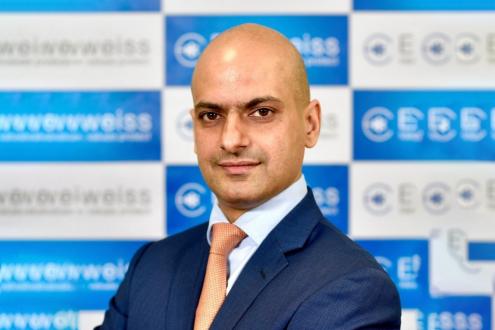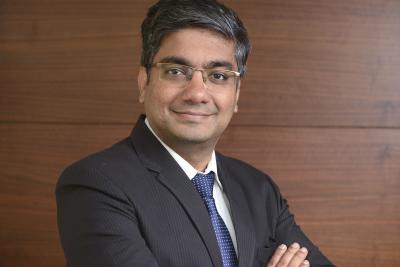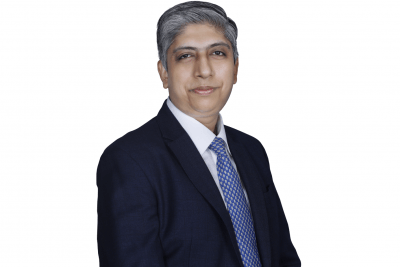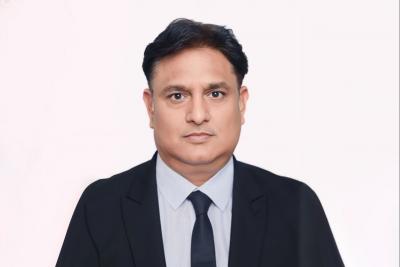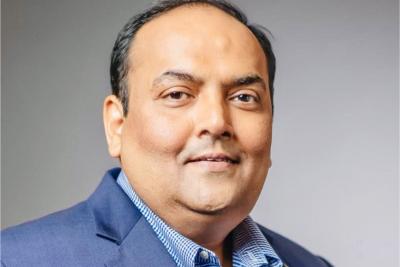Anshu Kapoor on Positioning Edelweiss Global Wealth Management for India’s Dynamic Future
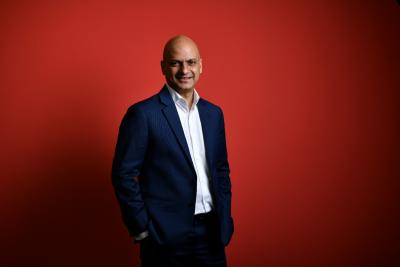
Anshu Kapoor of Nuvama Asset Management
Jan 20, 2022
Anshu Kapoor is President & Head, Investment Management of Mumbai-based Edelweiss Global Wealth Management, and he has not only been a remarkably lucid and insightful contributor to our pages over many years, but also a keen supporter of some of our events. Anshu was a sponsor and also a panel member of our last Digital Dialogue event of 2021, when on December 21 we assembled a group of four erudite, highly experienced bankers and one leading digital transformation expert to plot the recent developments in India’s increasingly dynamic wealth management market and to predict some of the future events and trends to watch out for in the foreseeable future. The panel was brimming with both enthusiasm and valuable observations, and none more so than Anshu, whose comments we have distilled in this short report.
The trajectory of the Indian wealth management market remains the same, but the speed of travel in certain directions has accelerated due to the global pandemic. The panel we assembled for the December 21 event cast their expert eyes over a variety of key topics, including market development, the growth outlook and challenges across the different segments of wealth, the democratisation of the wealth management offering in India, the evolution of the onshore investment universe, the efforts to shift the model from transactional and self-directed more towards advisory and discretionary, the expansion of estate and succession planning amongst the upper echelons of wealth, and the search for talent to help the industry expand in the decade ahead.
The panel managed to highlight the main evolutionary trends and zoomed in on the incredible potential that the hugely populous country has, especially (hopefully) when its economic growth gets back to its full dynamism in a post-Covid world.
Evolving the proposition
We last met with Anshu a few months earlier, in August 2021, when he had explained to us how he was relishing his current role at Edelweiss, having in January 2021 transitioned from his former position as Head of Private Wealth Management at Mumbai-based Edelweiss Global Wealth Management in 2020, not long after the markets had begun to stage what has since proven a miraculous recovery from the nadir of the Covid-19 shock.
He explained then that his continuing mission since the firm was founded in 2010 had been to fast-forward Edelweiss to a world where wealth management is delivered almost like a subscription service, with clients able to easily enter and exit at will and with minimal documentary and fee impediments. And those efforts have really borne fruit, with firm-wide AUM surging about 25% since then to USD20 billion and with a new investment of USD325 million in Edelweiss from a leading private equity group, which sees the opportunity in the firm’s major wealth business, the leading institutional equity broking platform and its pre-eminent investment banking operation.
Driving into the future
In his current role, Anshu has a stated mission to create India's largest and most respected alternatives investment management platform, delivering world-class solutions across hedge funds, private equity and structured solutions. His ‘big picture’ goals are to solve investor key headwinds such as diminishing returns on fixed income and extreme capital market volatility and at the same time achieve asset class, geographical and also currency diversification, and to boost access to more global and more sophisticated products.
Kapoor is relishing the new challenge he faces, and in September confirmed that across the three verticals of private equity, and the hedge fund and structured products platforms, they had already currently garnered around USD1 billion in assets under advice (AUA).
2021 – a remarkably good vintage in India
Anshu first told delegates on December 21 how great a year it had been in 2021 for India’s wealth management market.
“Nobody really expected how bullish things would turn out across asset classes,” he reported. “India is in a very good position from many different aspects, so we expect some of the bullishness to continue. A key trend we are seeing and getting deeply involved in is the rapid development of the private markets in India, which have already become both rather sophisticated and large.”
“Over the last 10 years, you might be surprised to learn that the amount of private equity that's come into this country exceeds the FPI (foreign portfolio inflows) to this country, which is quite incredible. India now gets about USD40 to 45 billion of private equity every year, and the average for the last five years is about USD35 billion.”
India’s Alibaba moment
He observed that at the same time, there was a “beautiful transition” of the capital markets in India underway.
“I call this India's ‘Alibaba moment’,” he stated, “and what I mean by that is that the US market transformed with major new era, with new age listings in the years 2000 to 2010 such as Google and others, and then China’s Alibaba listed in 2014, followed by a spate of Chinese new age companies that came into the markets and transformed the markets.”
And that, he said, is where we are in India today, right at that inflection point, and the index will look very different three or five years down the line, with a spate of new age companies heading to access the public markets. “It is beginning really,” he explained, “and even though we have seen the highest amount being raised in IPOs over the last 10-12 years, but I would argue that this will continue, and exciting times are ahead in the public markets as well.”
He also observed that those who have wealth today and those who will accumulate wealth tomorrow - and these are very large demographics in India – offers immense potential for wealth management businesses.
Adapting to the key trends
“A lot of us are maybe serving one category and this whole transition to try to straddle different, and very large and growing, segments will be of great interest as it unfurls,” he said. “There is a lot of excitement ahead in delivering all of these products and innovation across this dynamic and rapidly growing market.”
Another key area to exploit is digitisation, he reported.
“So far, we have really only scratched the surface of digital transformation actually,” he said. “We might now be able to digital enable investments, but some of us are trying to deliver even more complex solutions digitally, or with a hybrid model, so, the great interplay of a human and technology is emerging.”
He elaborated ion these views, noting that differentiation in the world of wealth management must centre on solving the needs of customers.
Solving the customer needs
“When I put on my investment management hat, I see four large unsolved needs of our customers,” he reported. “The first is access, so for example reckon 98% or more of India's best new age companies are owned by global private capital and we need to give India’s investors greater access to them. Secondly, we need to deliver a post-tax yield on investments that is higher than inflation. Third, we need to address volatility, as every three to four years, clients end up losing 30% to 40% of whatever they invest in equity markets, so we need to manage volatility better. And finally, we need greater diversification, as 99% of our wealth is onshore in India, and we need to boost access to and understanding of international investments. And in all these areas, we can prove our differentiation, because our thought process begins with the customer.”
Digitisation – the journey continues
He returned to the topic of digitisation, noting that the ability to deliver more seamless transactions and reporting had improved markedly in a short period. “Many areas of friction have been eliminated,” he said, “so much of that heavy-lifting has been done. It is now important to deliver advice, both omni-channel and the hybrid approach, where the role of the RM is transitioning to more of a problem finder and solver and away from nay of the more mundane tasks that they faced each day. With greater freedom and more tools, they can help address client needs and offer the right solutions, delivering with both digital and human interface.”
And he said that the Edelweiss platform already offers an edge. “It appears to me that this omni-channel, hybrid model will have value as we move forward, which is what we have seen in the most evolved markets. The role of the human advisor has not gone away, and we see that in the US, the top four or top five advisor firms or wealth managers will have about 60,000 to 70,000 advisors. And the real point is how your existing customers will evolve, and how the customers of the future will evolve and positioning for that evolution.”
Catering to evolving segments of wealth
He also highlighted the rapid growth of the mass affluent segment in India, pointing to a survey they conducted. “We found, for example, that many of these Gen Z and Gen X actual or potential customers do not like mutual funds, they see them as boring and ‘fuddy-duddy’, they like cryptos, ETFs and so forth. So we need to bear all this in mind, devising our business strategy, choice of products, and the choice of delivery models around these realities. Those people are the future, after all.”
He elaborated on these views, noting that on the Edelweiss mobile trading platform and the mobile app, there are more and more low age yet high income clients, for example IT professionals who love to invest and trade actively. “To cater to this smart, sophisticated sector of the market we realise we should go and partner through an open API and build alliances to deliver to this growing segment. We cannot do everything ourselves. So, we need to find people who can build these additional solutions, in order to deliver true service to the customer.”
Agility and dynamism
Anshu closed his comments with the prediction that the wealth industry will require great agility and imagination to cater to the different segments of the Indian wealth market of the future. “Some 10 years back, we used to only segment by income, and it was all rather basic, categorising them as older generation business builders, newer-gen entrepreneurs, wealth inheritors, family offices and so forth,” he remarked. “But I think as we go along, the whole approach to segmentation is evolving and emerging in this country, and it is really quite fascinating. Whichever firm can get their head around this, who can deliver to the major segments that are emerging, that can truly build the proposition for them and find a way to deliver that properly, those business will win and win beautifully in this market. And that is exactly how Edelweiss is thinking.”

President & Head at Nuvama Asset Management
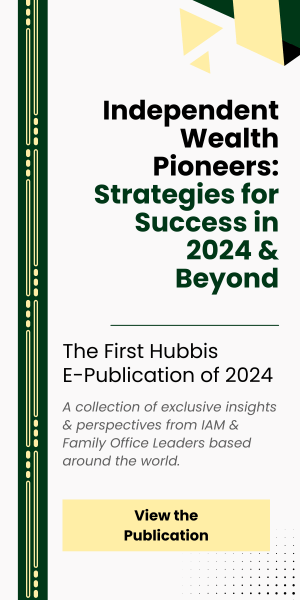
More from Anshu Kapoor, Nuvama Asset Management
Latest Articles


